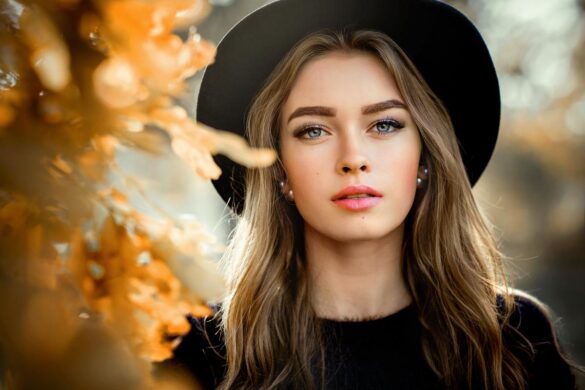Table of Contents
Mastering the Art of Outdoor Portrait Photography Tips: 10 Expert Tips for Stunning Portraits
Outdoor portrait photography is a captivating art form that allows photographers to capture the unique beauty and essence of their subjects in natural surroundings. Unlike indoor portraits, outdoor photography provides a plethora of possibilities when it comes to lighting, composition, and overall aesthetic. In this article, we will delve into the distinctiveness of outdoor portrait photography and provide you with valuable tips to enhance your skills in this field.
The Distinctiveness of Outdoor Portrait Photography
Unfolding the Charm of Outdoor Portraits
Outdoor portraits possess a certain charm and beauty that is hard to replicate in a studio setting. The vastness of the outdoors provides a stunning backdrop for your subjects, allowing them to shine and creating a sense of connection to nature. Furthermore, the changing lighting conditions and natural elements add an element of unpredictability and excitement to your photography.
Outdoor vs Indoor Portraits: A Comparative Study
Comparing outdoor and indoor portraits reveals the unique benefits and challenges of each. While indoor portraits offer controlled lighting and a controlled environment, outdoor portraits grant you access to diverse natural lighting sources and breathtaking landscapes. Additionally, outdoor portraits tend to be more dynamic, as you can experiment with different angles and compositions effortlessly.
Natural Light & Outdoor Portraiture: The Inseparable Bond

Mastering Natural Light for Better Portraits
Natural light is a fundamental element of outdoor portrait photography. It provides a beautiful and soft illumination that enhances the facial features of your subjects. To master natural light, it’s crucial to understand the way it interacts with different environments and how to make the most of it.
The Golden Hour: Best Time for Outdoor Portraits
The golden hour, also known as the magic hour, is the period shortly after sunrise or before sunset when the sun is low in the sky, resulting in warm and diffused lighting. This is often considered the best time for outdoor portraits as the soft light creates a flattering and ethereal glow. Planning your outdoor portrait sessions around the golden hour can significantly enhance the overall quality of your photographs.
Dealing with Direct Sunlight in Photography
While the golden hour provides ideal lighting conditions, outdoor portrait photography may also require shooting in harsh sunlight. Direct sunlight can create strong shadows and contrast in your images, which might not be desirable depending on the aesthetic you’re trying to achieve. To counteract the negative effects of direct sunlight, you can use reflectors, fill flash, or find shaded areas to soften the light and create more even lighting on your subject’s face.
Choosing the Right Gear For Outdoor Portrait Photography
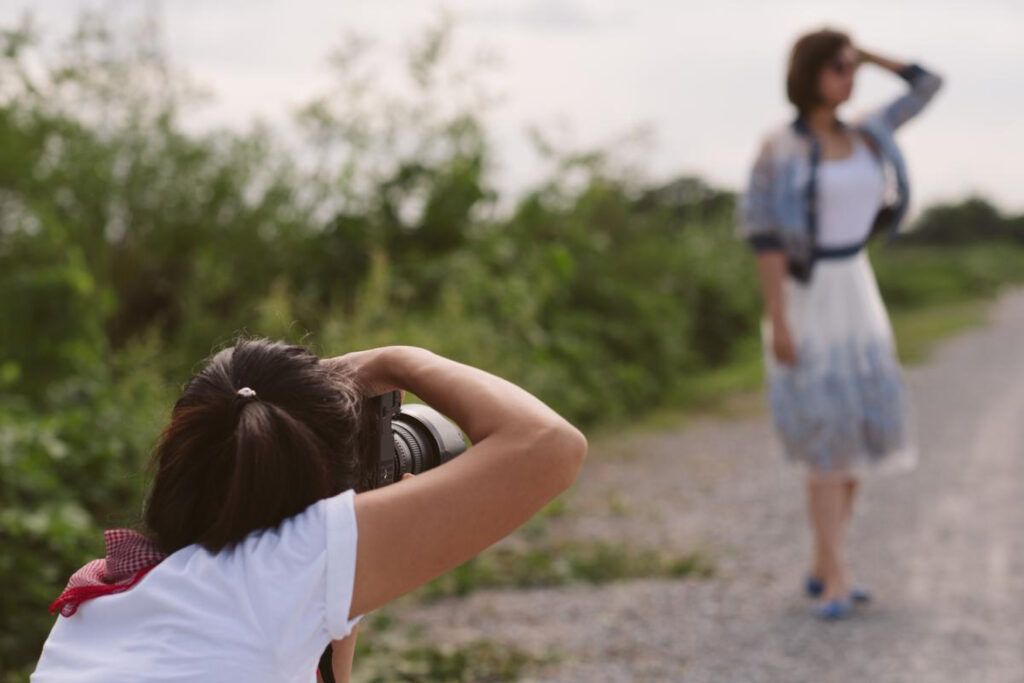
Understanding the Role of Lens in Portrait Photography
The choice of lens plays a vital role in outdoor portrait photography. A lens with a wide aperture, such as a prime lens, allows you to create a shallow depth of field and achieve beautiful bokeh, effectively separating your subject from the background. Consider using lenses with focal lengths between 50mm and 85mm, as they produce pleasing results for portraiture.
Guide to Choosing the Best Camera for Outdoor Portraits
Investing in a reliable and capable camera is essential for outdoor portrait photography. Look for a camera with excellent low-light performance, a wide dynamic range, and good autofocus capabilities. Full-frame and crop-sensor DSLR cameras are popular choices among portrait photographers, but mirrorless cameras are also gaining popularity due to their compactness and advanced features.
Why Reflectors are Essential for Outdoor Portraiture
Reflectors are invaluable tools in outdoor portrait photography as they allow you to manipulate natural light and fill in shadows. A reflector can bounce light back onto your subject, reducing harsh shadows and creating a more even and flattering illumination. They come in various shapes and sizes and are lightweight and easy to carry, making them an essential accessory in your outdoor photography gear.
Optimal Camera Settings for Outdoor Portrait Photography
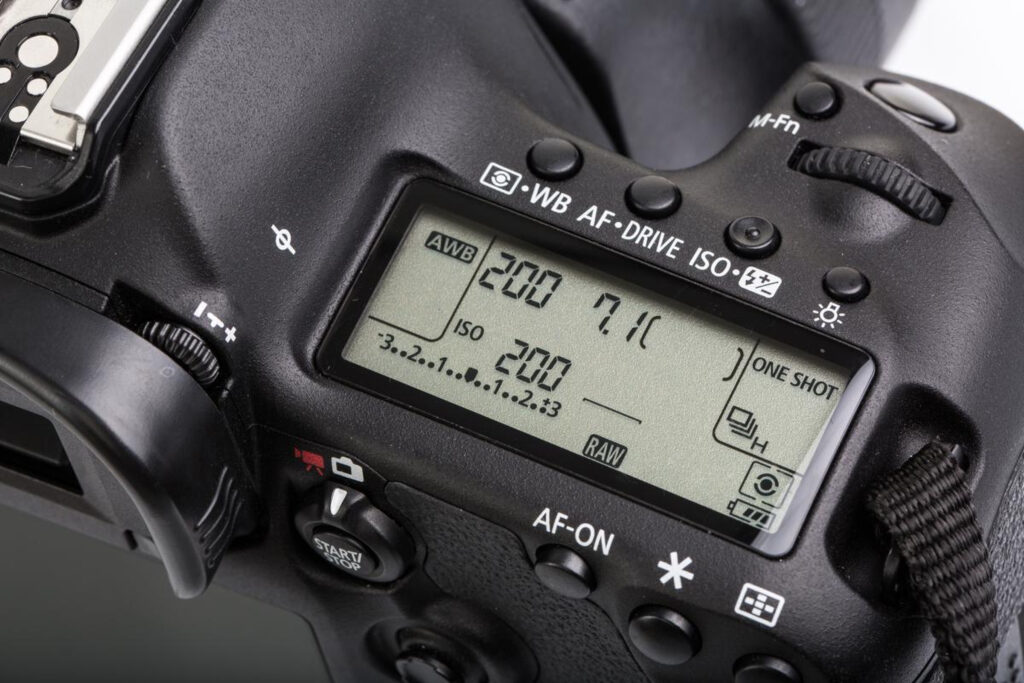
Decoding the Right Camera Settings for Outdoor Portraits
Understanding and selecting the appropriate camera settings is crucial for capturing remarkable outdoor portraits. Start by setting your camera to aperture priority mode (A or Av mode), which allows you to control the depth of field. Adjust the aperture to a wide setting (low f-number) to achieve a shallow depth of field, emphasizing your subject and creating a pleasing blur in the background.
Mastering the Focal Length for Professional Portrait Photography
The focal length you choose can have a significant impact on your outdoor portraits. Shorter focal lengths, such as 35mm or 50mm, provide a wider field of view and are great for environmental portraits. Longer focal lengths, such as 85mm or 135mm, allow for greater subject isolation and are ideal for capturing close-up shots with beautiful background blur.
The Role of Bokeh in Outdoor Portraits
Bokeh refers to the aesthetic quality of the out-of-focus areas in a photograph. Achieving a pleasing bokeh can greatly enhance your outdoor portraits by isolating your subject and creating a dreamy atmosphere. To create beautiful bokeh, use a wide aperture and ensure that there is sufficient distance between your subject and the background.
Perfect Setting & Time of Day for Outdoor Portraits
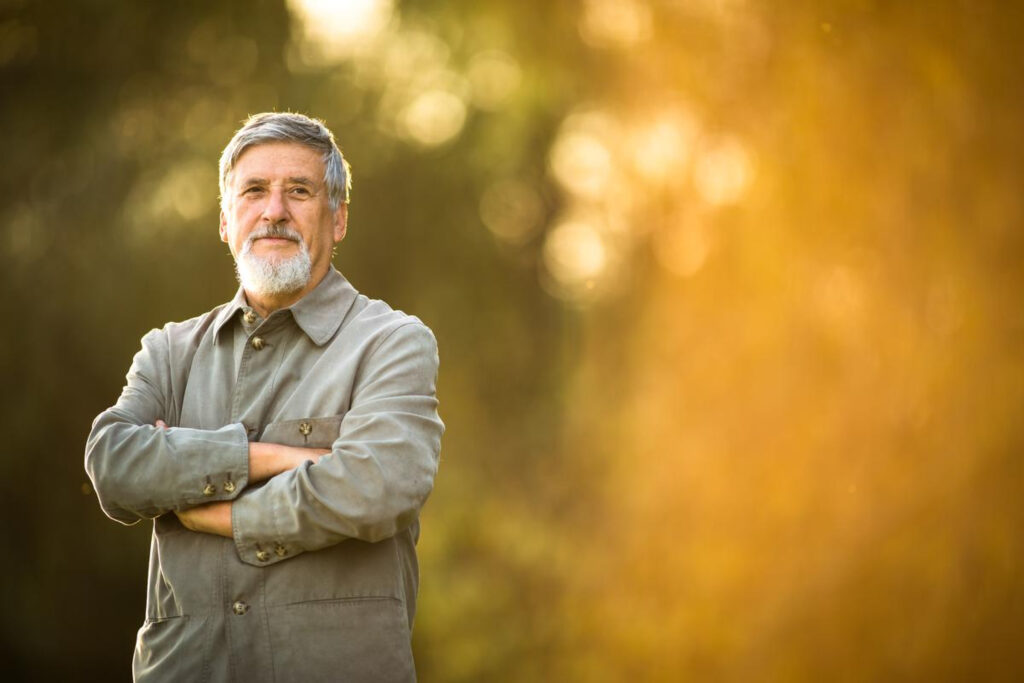
Choosing the Perfect Environment for Outdoor Photography
The environment you choose for your outdoor portraits significantly contributes to the overall impact of your photographs. Whether it’s a lush green forest, a vibrant urban street, or a serene beach, select a location that complements and enhances your subject. Consider the colors, textures, and overall mood of the surroundings to create visually captivating portraits.
Understanding the Best Time of Day for Photography
While the golden hour is often considered the optimal time for outdoor portraits, different times of the day offer unique lighting conditions and atmospheres. Experiment with shooting during sunrise, midday, and sunset to capture a variety of moods and perspectives. Each time of day brings its own challenges and rewards, allowing you to explore different creative possibilities.
Improve Your Outdoor Portraits: Practical Tips for Beginners
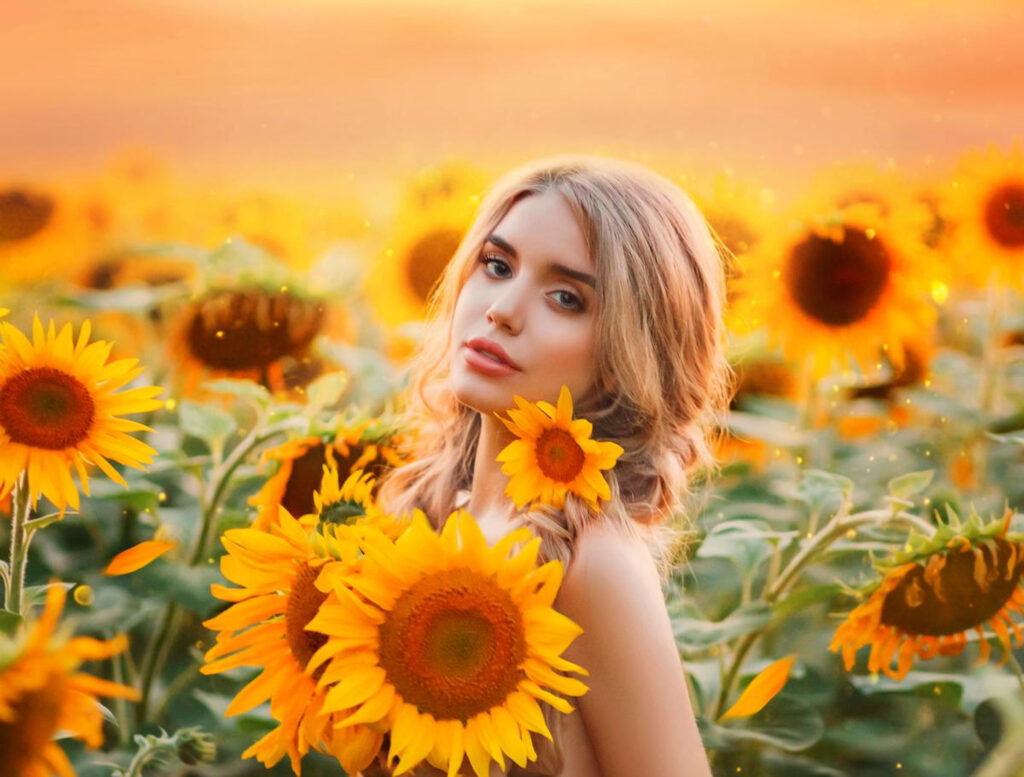
Planning Tips for Outdoor Portrait Photography
Before heading out for an outdoor portrait shoot, it’s essential to plan ahead and consider various factors. Research your location, check weather conditions, and communicate with your subject to align on goals and expectations. Having a clear vision and a plan will help you make the most of your photography session.
Tips for Capturing Professional Outdoor Portraits
To capture professional-looking outdoor portraits, it’s important to pay attention to details and make deliberate choices. Experiment with different poses, angles, and compositions to add visual interest and capture the essence of your subject. Take the time to establish rapport with your subject, as a comfortable and relaxed atmosphere will produce more authentic and captivating photographs.
Guide to Making the Best Use of Outdoor Elements
The outdoors offers a plethora of elements that can be included in your outdoor portraits to add depth and interest to your images. Incorporate natural elements such as trees, flowers, or bodies of water to create a more dynamic and visually appealing composition. Utilize leading lines and negative space to draw attention to your subject and guide the viewer’s eye through the photograph.
Capturing the True Essence: Outdoor Portraiture Techniques

Creating Emotional Connection with Outdoor Photography
Outdoor portraiture provides an opportunity to capture not only the physical appearance of your subject but also their emotional essence. Encourage your subject to relax, express themselves, and interact with their environment. Candid shots can often result in more authentic and emotionally impactful photographs.
Storytelling through Outdoor Portraits
Outdoor portrait photography can serve as a medium for storytelling. Use your surroundings, props, and composition to tell a narrative and evoke emotions. Whether you’re capturing a child exploring a meadow or a musician playing by the beach, aim to convey a story that resonates with the viewer.
Additional Gear for Enhanced Outdoor Portraiture
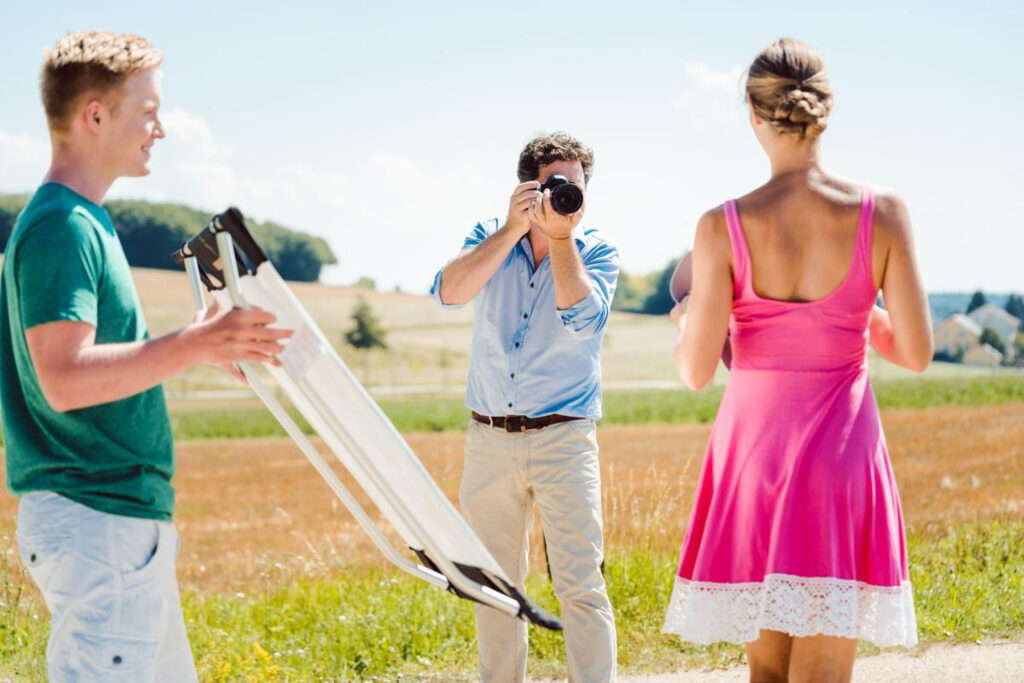
Exploring Additional Tools: From Tripods to Camera Accessories
In addition to your camera and lens, there are various tools and accessories that can further enhance your outdoor portrait photography. Consider investing in a sturdy tripod to ensure camera stability and enable long-exposure shots. Other useful accessories include remote shutter releases for self-portraits, neutral density filters to control exposure, and color correction tools to maintain accurate colors.
Role of a Reflector in Enhancing Outdoor Portraits
The primary purpose of a reflector is to manipulate light and fill in shadows. Reflectors can bounce light onto your subject, reducing harsh shadows and creating a more even and flattering illumination. They are especially useful when shooting in direct sunlight or during times when natural lighting conditions may not be ideal.
Post-Processing Outdoor Portrait Photos: A Quick Guide

Editing Tips for Enhancing Your Outdoor Portraits
Post-processing is an essential step in bringing out the full potential of your outdoor portrait photos. Use editing software such as Adobe Lightroom or Photoshop to adjust exposure, contrast, and color balance. Pay attention to skin tones, remove distractions, and apply subtle enhancements to ensure your subjects look their best while maintaining a natural appearance.
Tools and Techniques for Post-Processing Outdoor Photography
In addition to basic adjustments, there are various advanced tools and techniques you can employ when post-processing your outdoor portrait photographs. Experiment with selective adjustments, gradient filters, and dodge and burn techniques to further enhance specific areas of your images and draw attention to your subject.
Final Thoughts and Further Readings
Continuous Learning: The Key to Mastering Outdoor Portraiture
Outdoor portrait photography is a journey of continuous learning and exploration. As you gain experience and experiment with different techniques and approaches, your skills will naturally progress. Stay curious, seek inspiration from other photographers, and never stop experimenting to truly master the art of outdoor portraiture.
Beyond the Basics: What’s Next in Outdoor Portrait Photography?
Once you have a solid foundation in outdoor portrait photography, there are endless possibilities to explore and push boundaries. Consider delving into more niche sub-genres, such as environmental portraiture or conceptual photography. Experiment with different styles, themes, and unconventional locations to further push your creativity and artistic vision.
FREQUENTLY ASKED QUESTIONS
Q: What is outdoor portrait photography?
A: Outdoor portrait photography is a genre of photography that involves taking portraits of people in outdoor settings, such as parks, beaches, or urban environments.
Q: What are some outdoor portrait photography tips for beginners?
A: Some outdoor portrait photography tips for beginners include choosing the right location, considering the lighting conditions, using a reflector to fill in shadows, and experimenting with different poses and angles.
Q: What is the best camera for outdoor portrait photography?
A: The best camera for outdoor portrait photography depends on your budget and personal preferences. However, a camera with manual settings and interchangeable lenses is usually recommended for greater control over the final result.
Q: How do I choose the right lens for outdoor portrait photography?
A: When choosing a lens for outdoor portrait photography, it’s important to consider the focal length. A lens with a focal length between 50-85mm is generally preferred as it produces flattering images without distorting facial features.
Q: What is the golden hour in outdoor photography?
A: The golden hour refers to the period shortly after sunrise or before sunset when the lighting is soft, warm, and diffused. This is considered the ideal time for outdoor portrait photography as it creates a beautiful and flattering light.
Q: How can I manage harsh direct sunlight during outdoor portrait photography?
A: To manage harsh direct sunlight during outdoor portrait photography, you can position your subject in the shade, use a reflector or fill flash to fill in shadows, or wait for a cloud to temporarily block the sun.
Q: What photography settings should I use for outdoor portrait photography?
A: The ideal photography settings for outdoor portrait photography depend on the specific conditions and desired effect. However, some general tips include using a wide aperture (low f-stop number) to create a shallow depth of field and blur the background, using a fast shutter speed to freeze motion, and setting the white balance to auto or a specific setting that suits the lighting conditions.
Q: What is bokeh and how can I achieve it in outdoor portrait photography?
A: Bokeh refers to the aesthetic quality of the out-of-focus areas in a photograph. To achieve bokeh in outdoor portrait photography, you can use a wide aperture (low f-stop number) to create a shallow depth of field and separate your subject from the background.
Q: How can I improve my outdoor portrait photography skills as a photographer?
A: To improve your outdoor portrait photography skills, practice regularly, study composition techniques, experiment with different lighting setups, learn how to pose and direct your subjects, and analyze the work of other photographers for inspiration.
Q: What are some tips for capturing beautiful outdoor portraits?
A: Some tips for capturing beautiful outdoor portraits include finding interesting and suitable locations, paying attention to the background, using natural light to your advantage, capturing genuine expressions, and experimenting with different angles and perspectives.
Q: How can I use a reflector in outdoor portrait photography?
A: To use a reflector in outdoor portrait photography, position it opposite to the main light source (usually the sun) to bounce light onto your subject’s face. This fills in shadows and creates a more balanced and flattering lighting.


